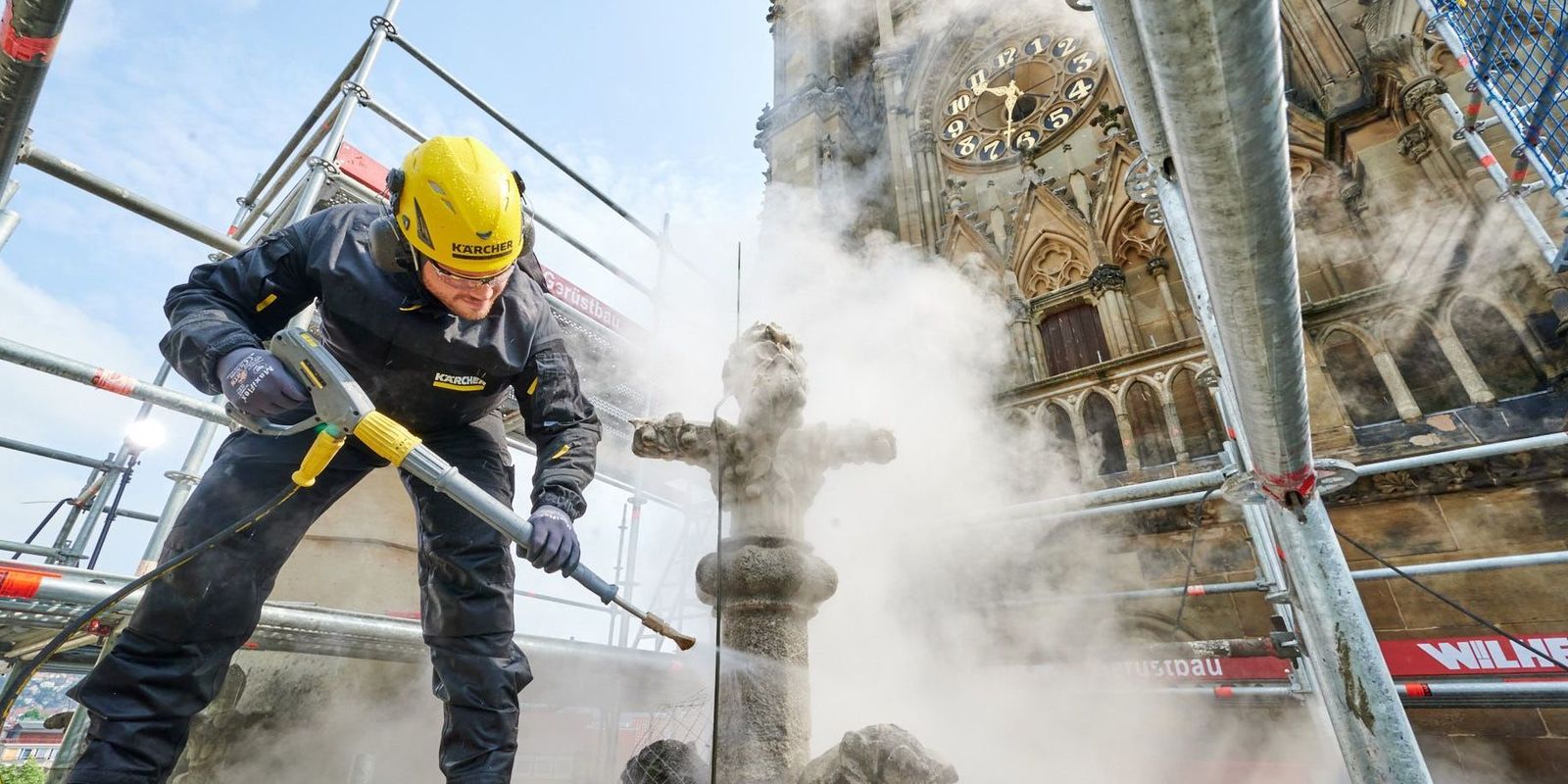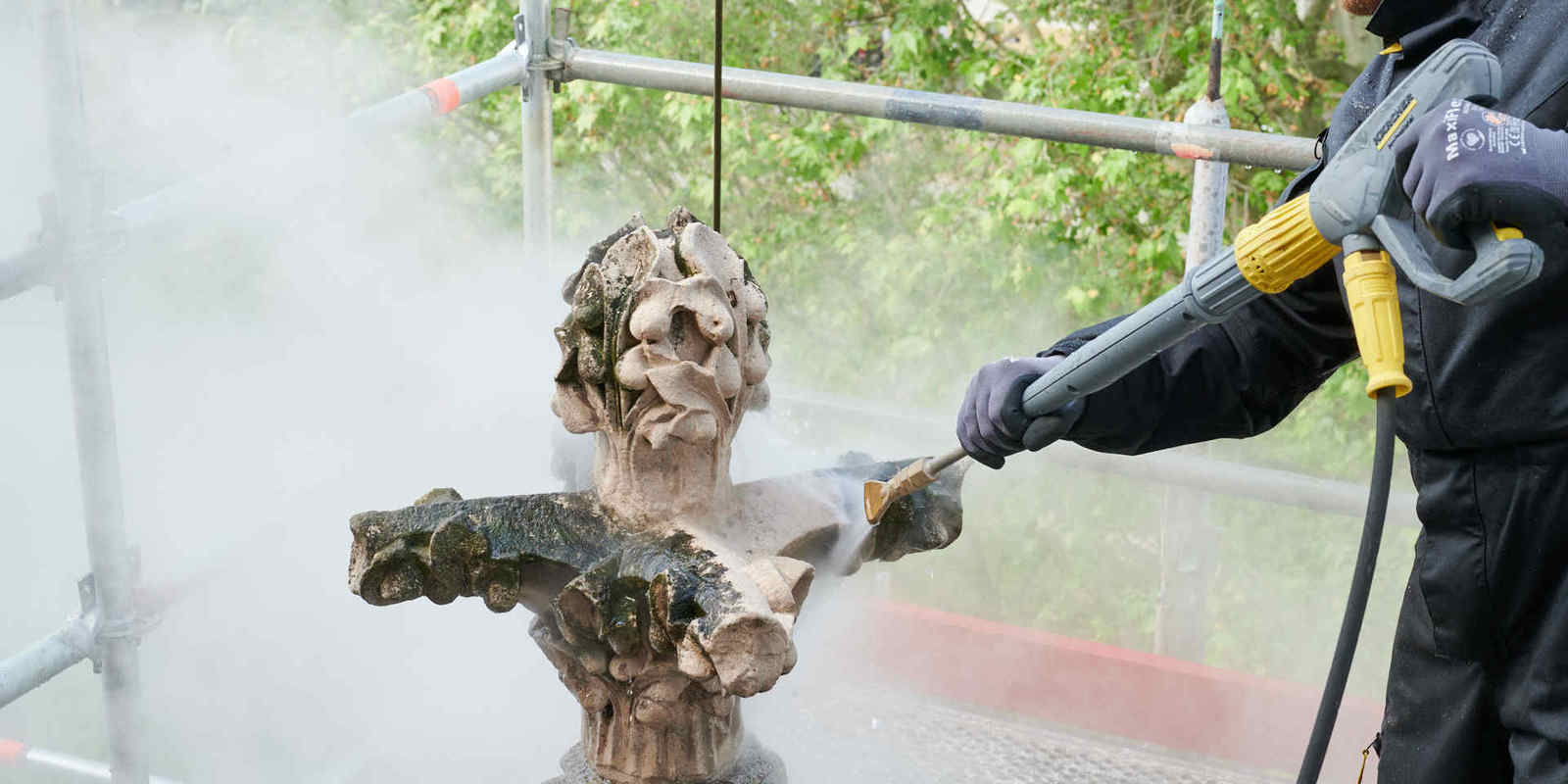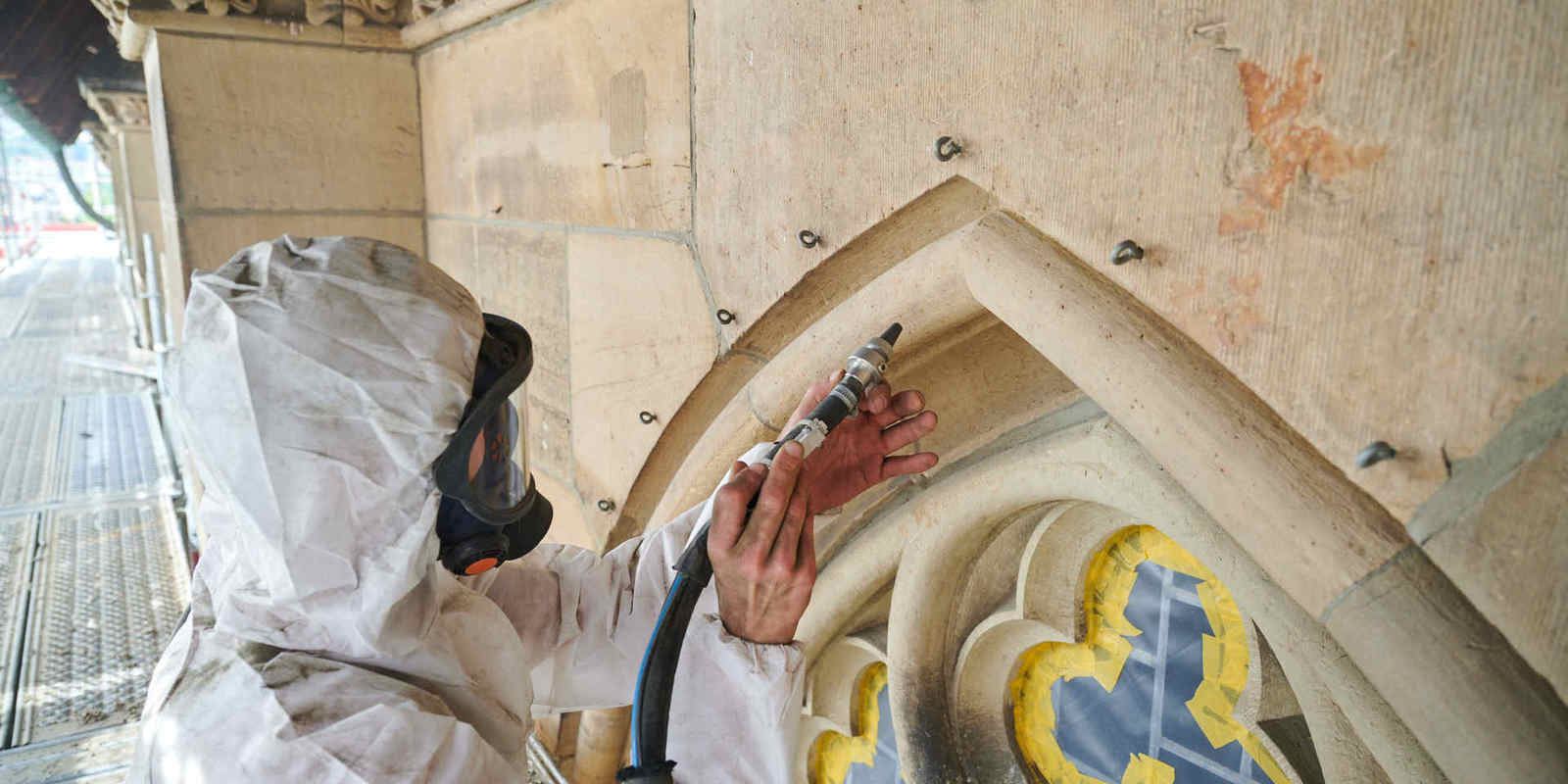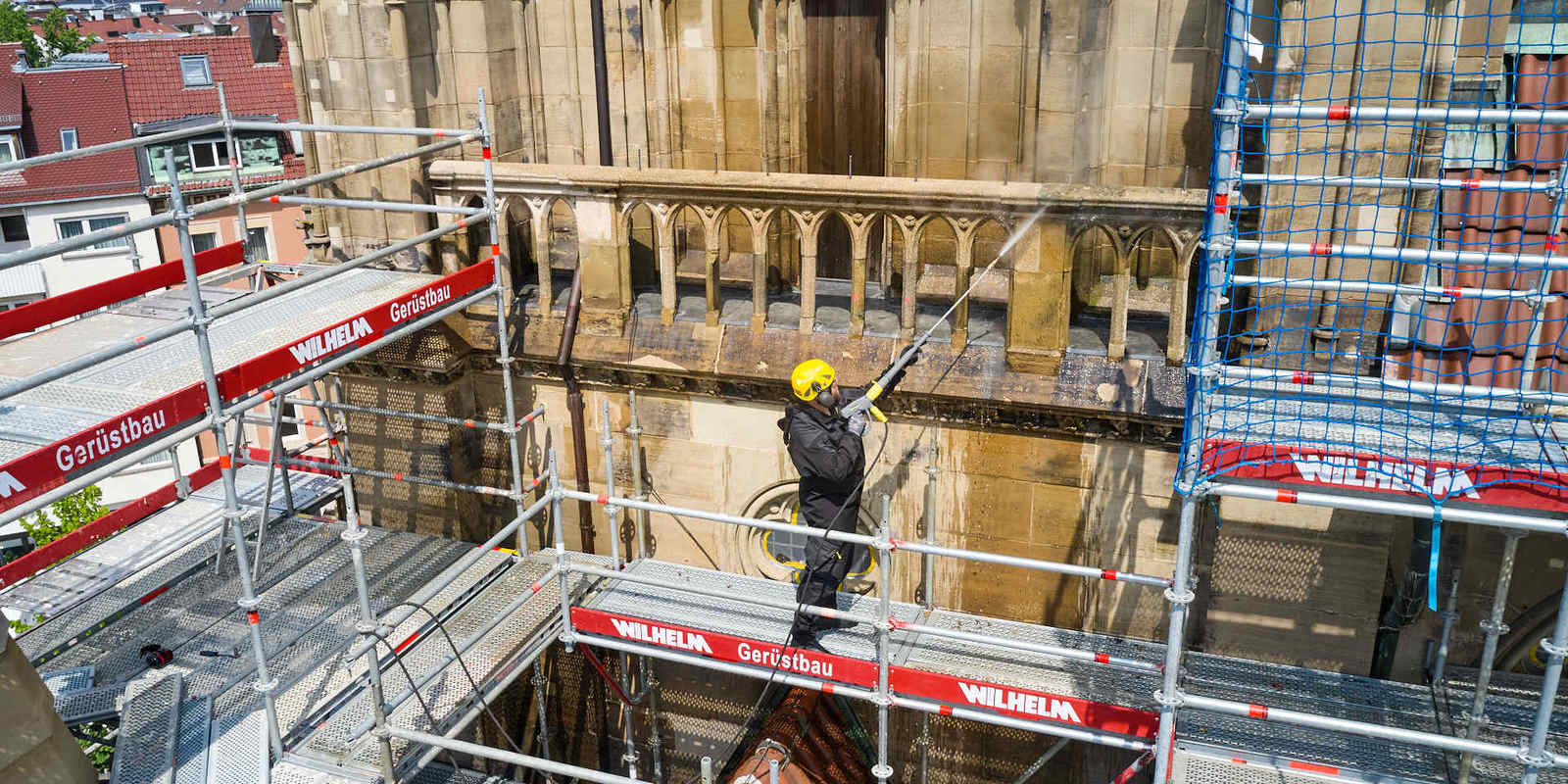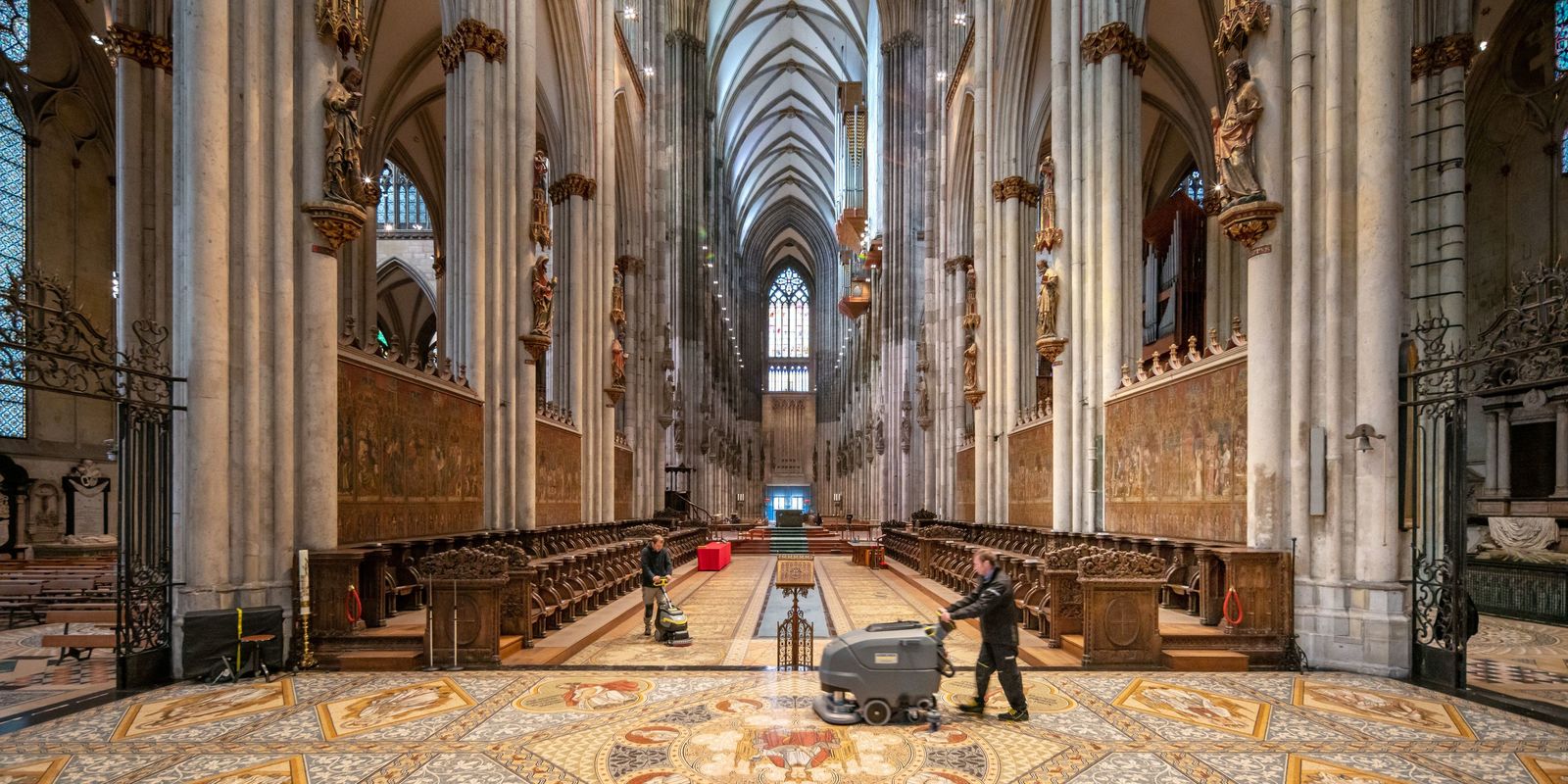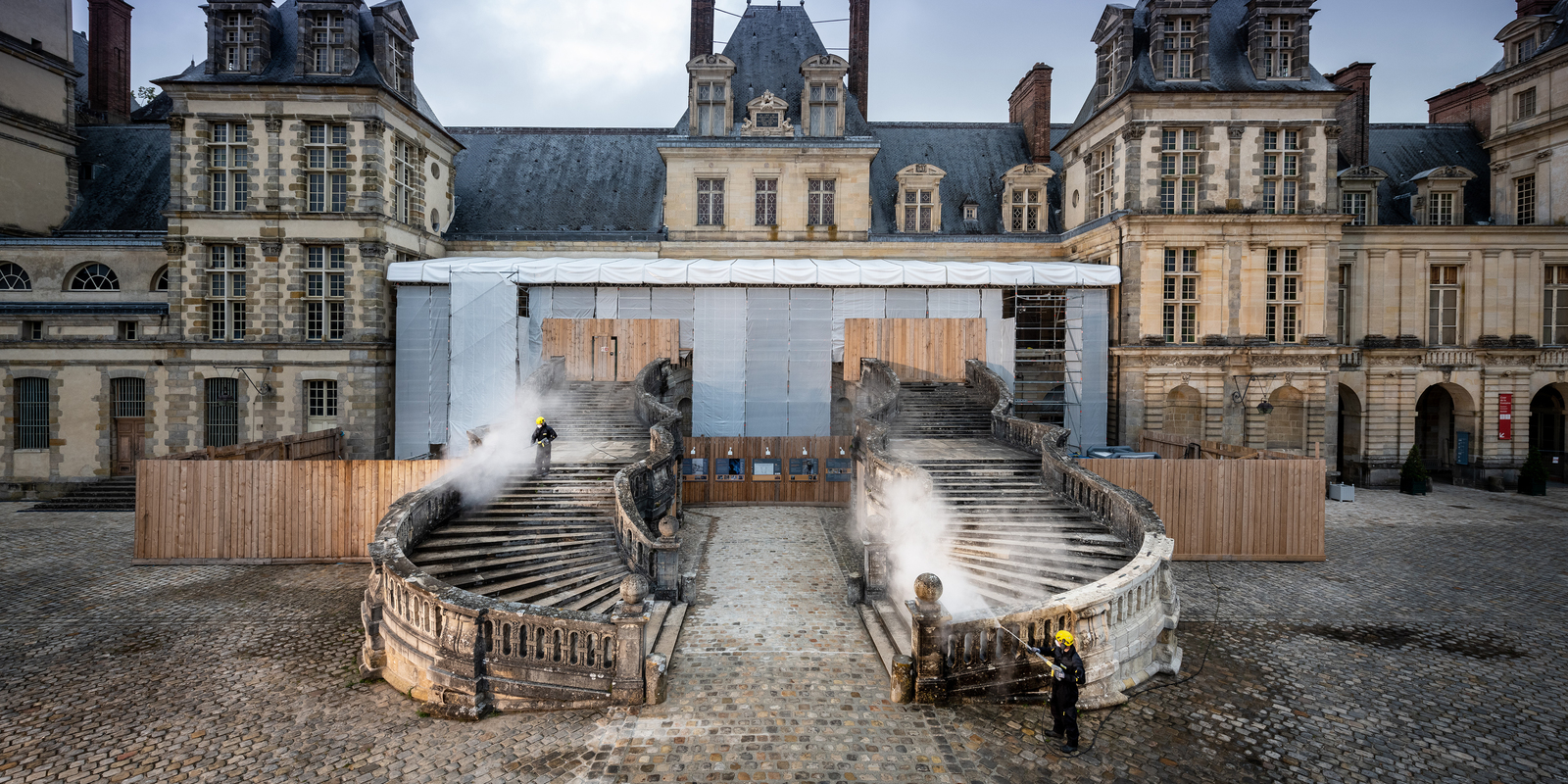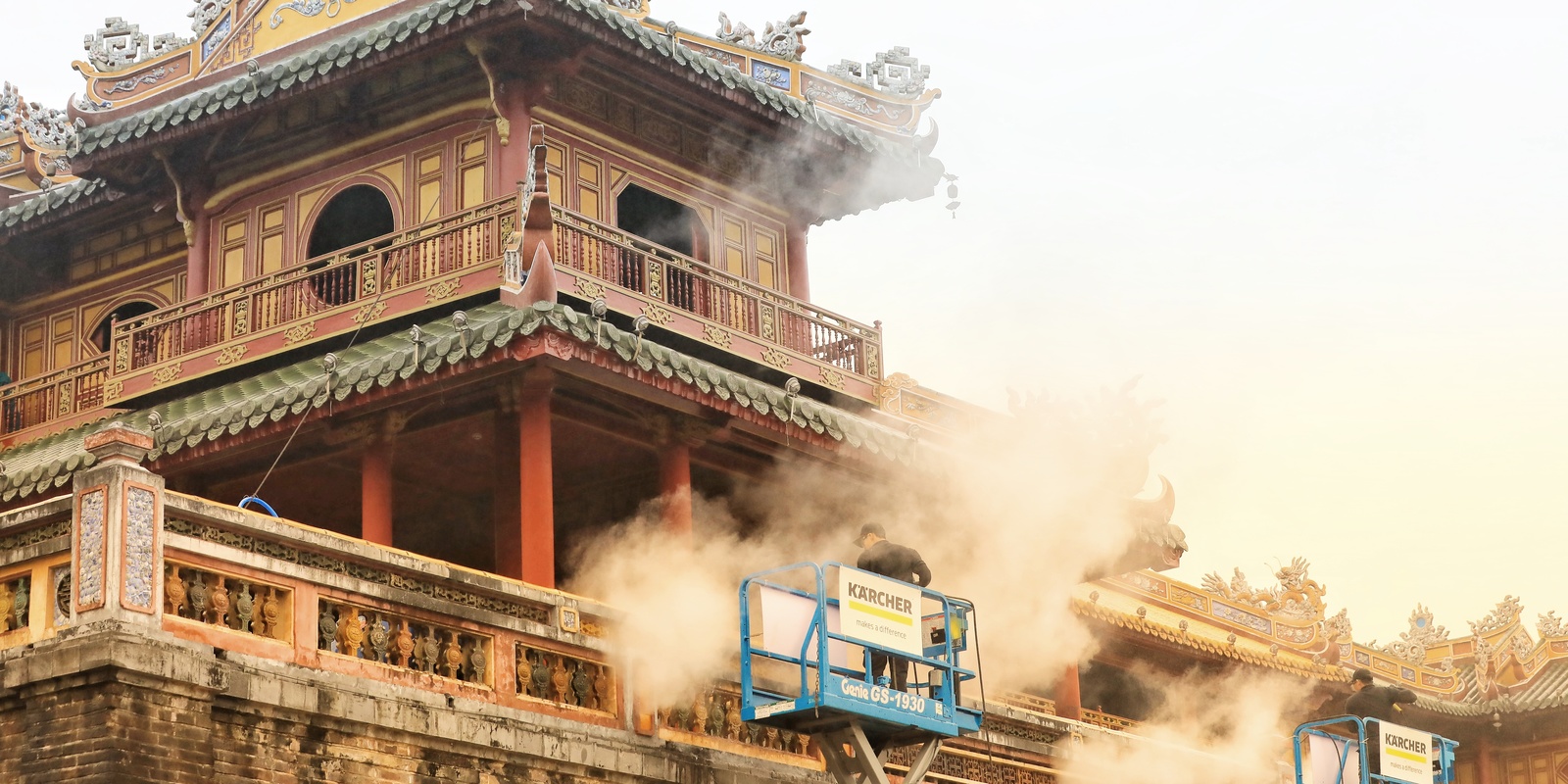Kärcher cleans St. John's Church at Feuersee in Stuttgart-West
The people of Stuttgart affectionately call it their little Notre Dame of the Feuersee - the Johanneskirche in the west of Stuttgart. Kärcher spent four weeks cleaning the sandstone walls of the south-western façade of the church. In the process, biological growth that was damaging the substance and discolouration that made the stones appear dark were gently removed. The costs for the extensive cleaning work, which is part of a larger-scale renovation of the church, are borne by Kärcher as part of its cultural sponsorship.
"I am pleased that by cleaning St. John's Church we can contribute to the sustainable protection of an important cultural monument in the region," says Hartmut Jenner, Chairman of the Board of Alfred Kärcher SE & Co. KG. "It is very important to us to preserve this building for the people of Stuttgart."
"St. John's Church at Feuersee is a landmark of Stuttgart. It is considered a memorial against war and destruction because of its missing spire. Now it is being extensively renovated, and the Kärcher company is participating by cleaning the sandstone walls of the south-western church façade, free of charge and with employees on site. A big thank you to the Kärcher company! An exemplary commitment!," says Stuttgart's Lord Mayor Dr Frank Nopper.
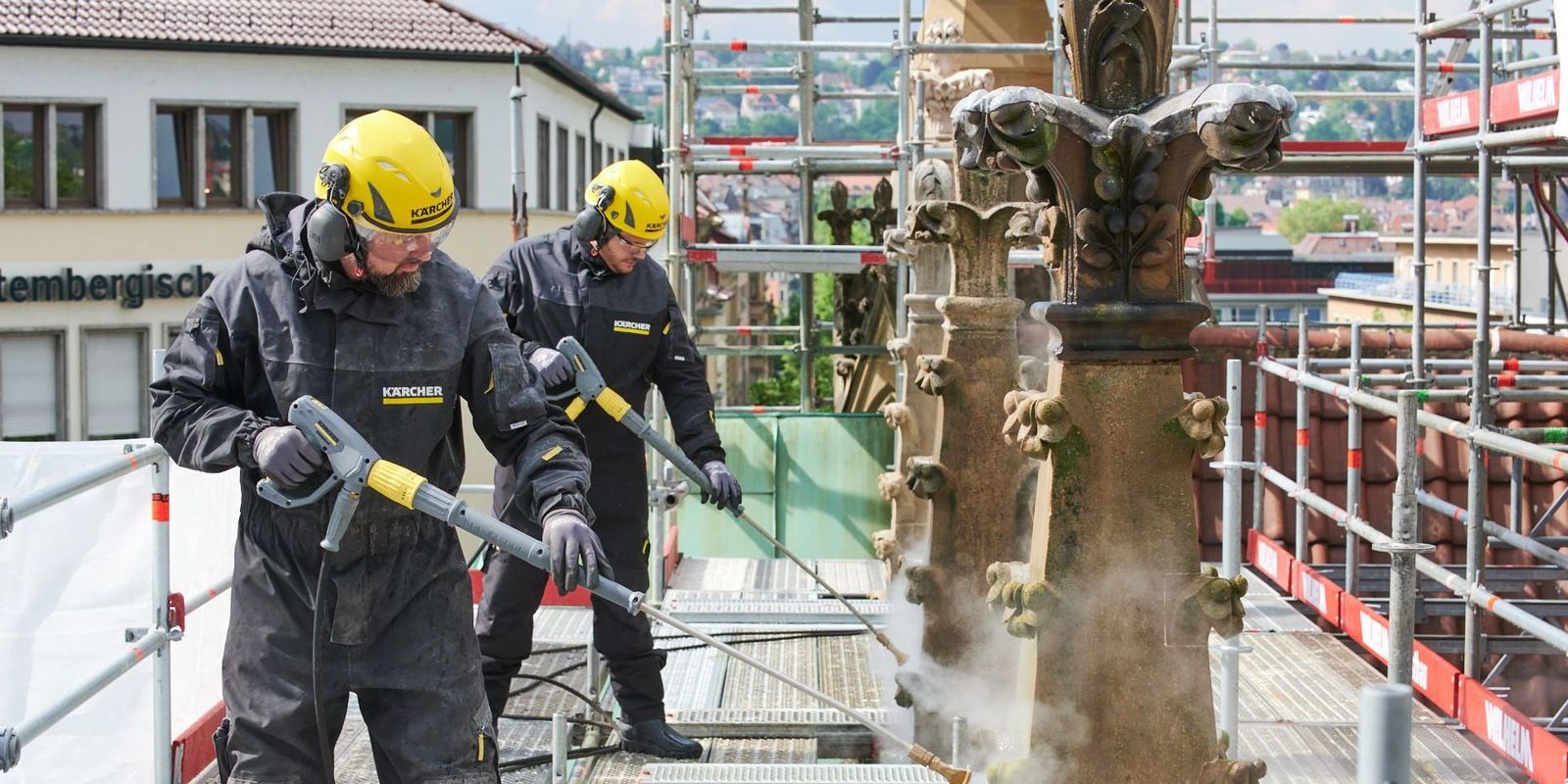
St. John's Church was badly damaged during the war and was rebuilt between 1948 and 1966, but without the spire and the vault in the nave. The outer façade of the neo-Gothic church was then exposed to weather conditions and inner-city pollution such as chimney soot and exhaust fumes for many decades. The resulting deposits are now being removed for the first time in a way that is gentle on the substance and using various cleaning techniques. In the first step, biological growth such as moss and algae on the surface is removed with the help of hot water high-pressure cleaners in the gentle steam stage at 95 °C and a reduced pressure of maximum 0.5 - 1 bar. In addition to removal, the steam also delays the re-colonisation of vegetation, as deep-seated spores are destroyed by the high temperatures. Hot steam cleaning is one of the most effective and at the same time most gentle techniques for cleaning and preserving mineral building substances.
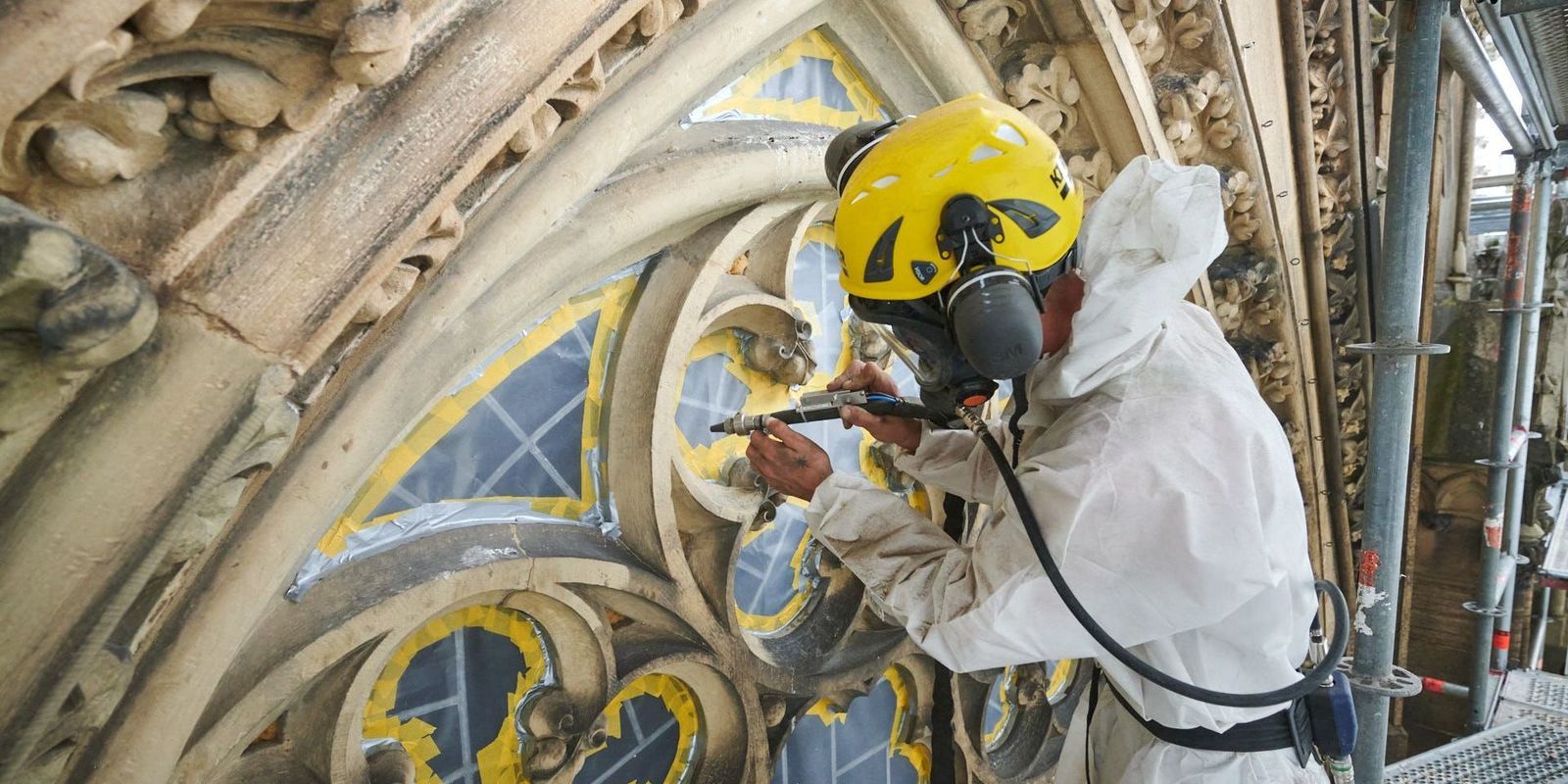
Subsequently, further deposits - so-called black crusts - are removed with the low-pressure micro-particle blasting method. In principle, the procedure works similarly to sandblasting, except that it is carried out much more sensitively. In order not to damage the valuable original substance of the sensitive sandstone façade, the Kärcher experts use a pressure of 1 - 1.5 bar to remove individual deposits completely, while others are only thinned out for conservation reasons. Manganese deposits in particular will remain visible even after cleaning. They do not represent pollution, but are a natural part of the ageing process in sandstone.
"The St. John's church plays a special role in the circle of Stuttgart churches. The connection between the church and the Feuersee makes this place special. But now we are challenged. The renovation and cleaning of the Johanneskirche is a mammoth task for the Protestant Church and will tie up many resources. I am all the more grateful that the Kärcher company is helping us by cleaning the stone walls. I am already looking forward to the moment when St. John's Church can be admired in its original beauty," says city dean Søren Schwesig.
St. John's Church at Stuttgart's Feuersee is one of the landmarks of the state capital. It was completed in 1876 in the neo-Gothic style according to the plans of architect Christian Friedrich von Leins and is thus the first post-medieval church building in Stuttgart. The Johanneskirche is one of three churches in the Protestant parish of Stuttgart-West. It is open to visitors daily from 9:00 am to 5:00 pm and is led by Pastor Prof. Dr. Christoph Dinkel.
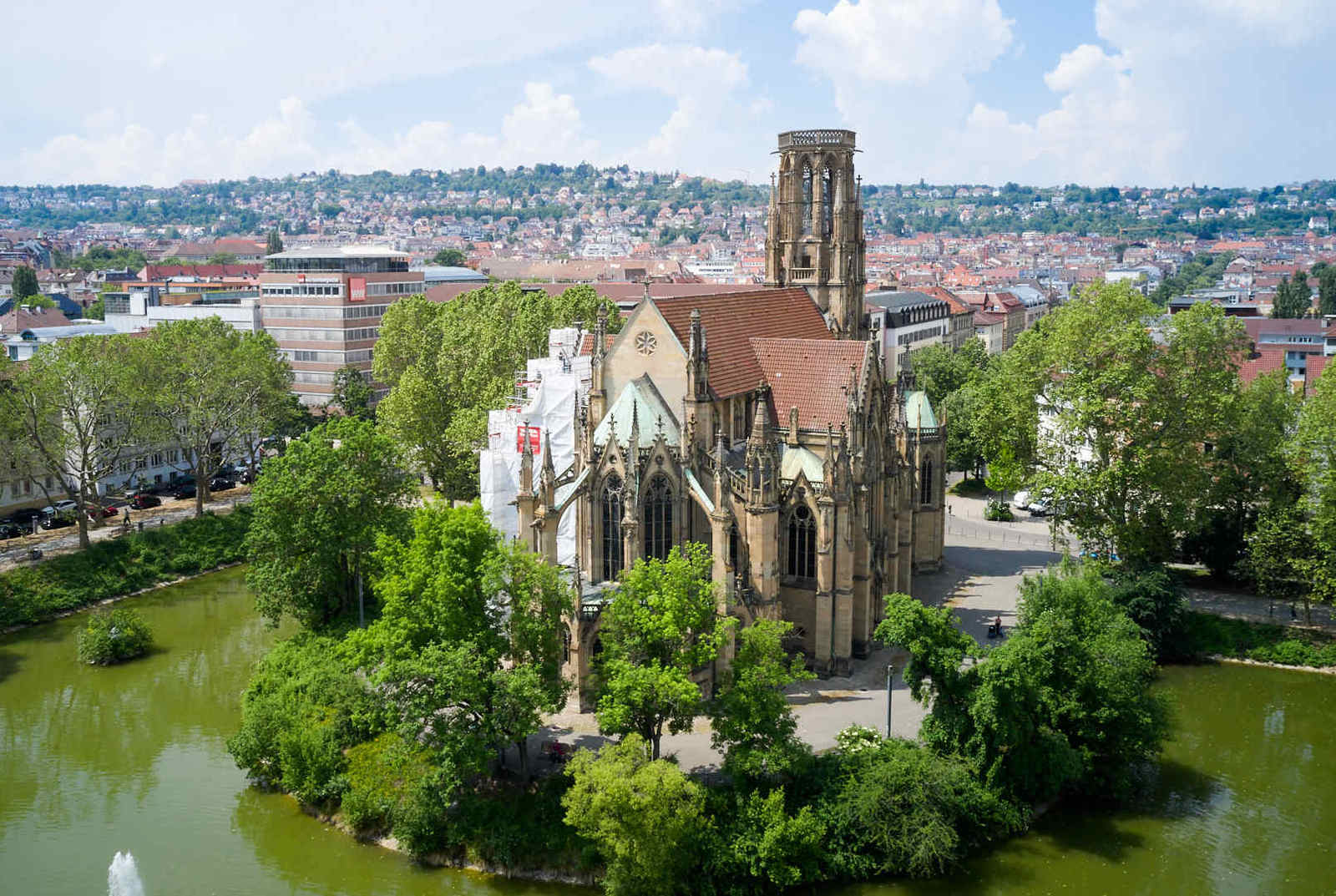

All facts at a glance
Country: Germany
Place: Stuttgart
Dirt: Bird droppings, biological fouling, soot, traffic emissions and dust
Cleaning technology: steam stage of the hot-water high-pressure cleaner, low-pressure particle blasting
Implementation: June 2021

